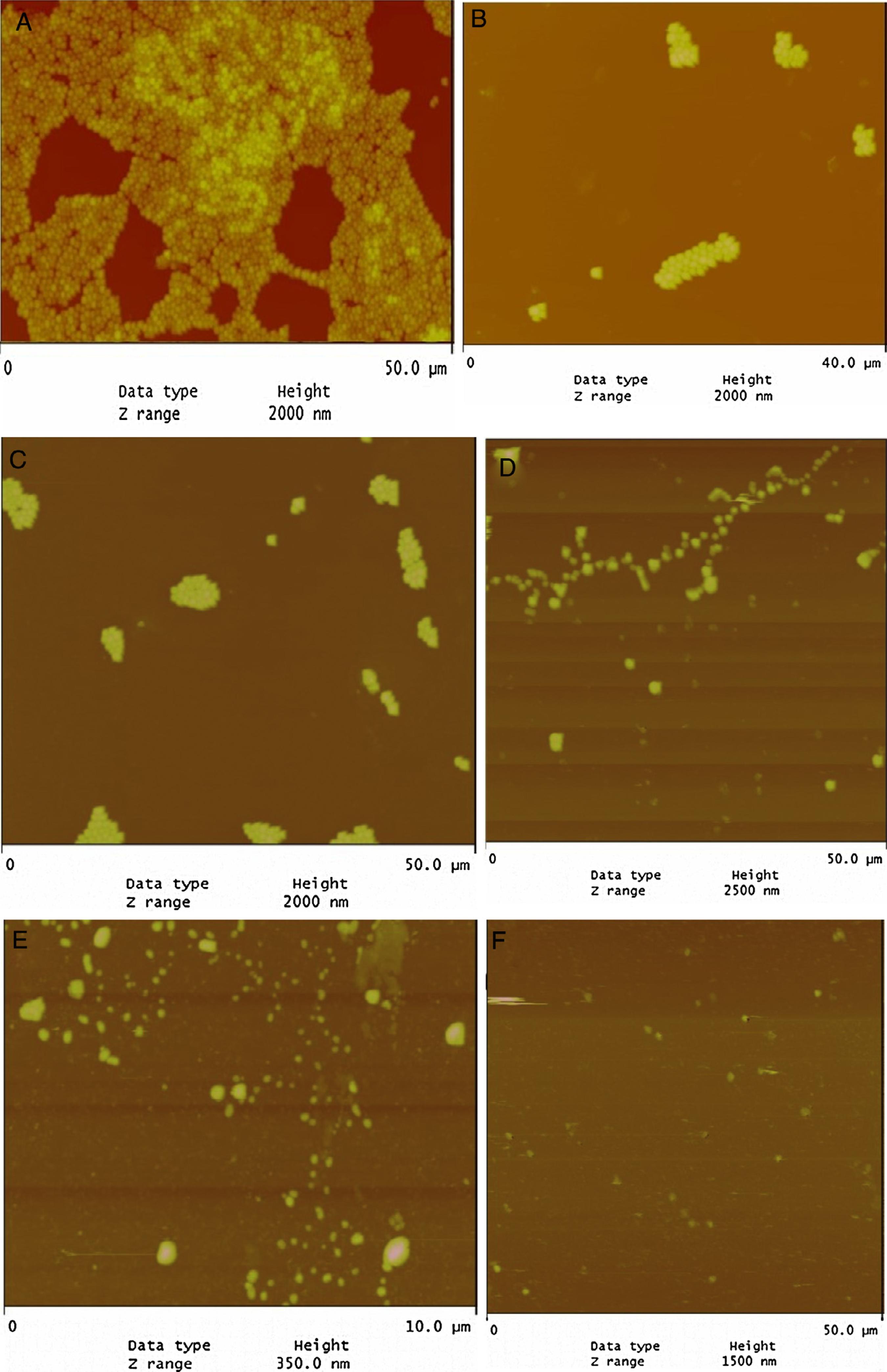Abstract
Objectives:
This study aims to investigate the antimicrobial and the anti-biofilm activities of Lactobacillus plantarum extract (LPE) against a panel of oral Staphylococcus aureus (n = 9) and S. aureus ATCC 25923. The in vitro ability of LPE to modulate bacterial resistance to tetracycline, benzalchonium chloride, and chlorhexidine were tested also.
Methods:
The minimum inhibitory concentrations (MICs) and the minimal bactericidal concentrations of Lactobacillus plantarum extract, tetracycline, benzalchonium chloride and clohrhexidine were determined in absence and in presence of a sub-MIC doses of LPE (1/2 MIC). In addition, the LPE potential to inhibit biofilm formation was assessed by microtiter plate and atomic force microscopy assays. Statistical analysis was performed on SPSS v. 17.0 software using Friedman test and Wilcoxon signed ranks test. These tests were used to assess inter-group difference (p < 0.05).
Results:
Our results revealed that LPE exhibited a significant antimicrobial and anti-biofilm activities against the tested strains. A synergistic effect of LPEs and drug susceptibility was observed with a 2–8-fold reduction.
Conclusion:
LPE may be considered to have resistance-modifying activity. A more detailed investigation is necessary to determine the active compound responsible for therapeutic and disinfectant modulation.
Keywords:
Antibacterial; Staphylococcus aureus; Biofilm; Antibiotics; Synergetic; Lactobacillus

